- News
- Reviews
- Bikes
- Accessories
- Accessories - misc
- Computer mounts
- Bags
- Bar ends
- Bike bags & cases
- Bottle cages
- Bottles
- Cameras
- Car racks
- Child seats
- Computers
- Glasses
- GPS units
- Helmets
- Lights - front
- Lights - rear
- Lights - sets
- Locks
- Mirrors
- Mudguards
- Racks
- Pumps & CO2 inflators
- Puncture kits
- Reflectives
- Smart watches
- Stands and racks
- Trailers
- Clothing
- Components
- Bar tape & grips
- Bottom brackets
- Brake & gear cables
- Brake & STI levers
- Brake pads & spares
- Brakes
- Cassettes & freewheels
- Chains
- Chainsets & chainrings
- Derailleurs - front
- Derailleurs - rear
- Forks
- Gear levers & shifters
- Groupsets
- Handlebars & extensions
- Headsets
- Hubs
- Inner tubes
- Pedals
- Quick releases & skewers
- Saddles
- Seatposts
- Stems
- Wheels
- Tyres
- Health, fitness and nutrition
- Tools and workshop
- Miscellaneous
- Tubeless valves
- Buyers Guides
- Features
- Forum
- Recommends
- Podcast
review
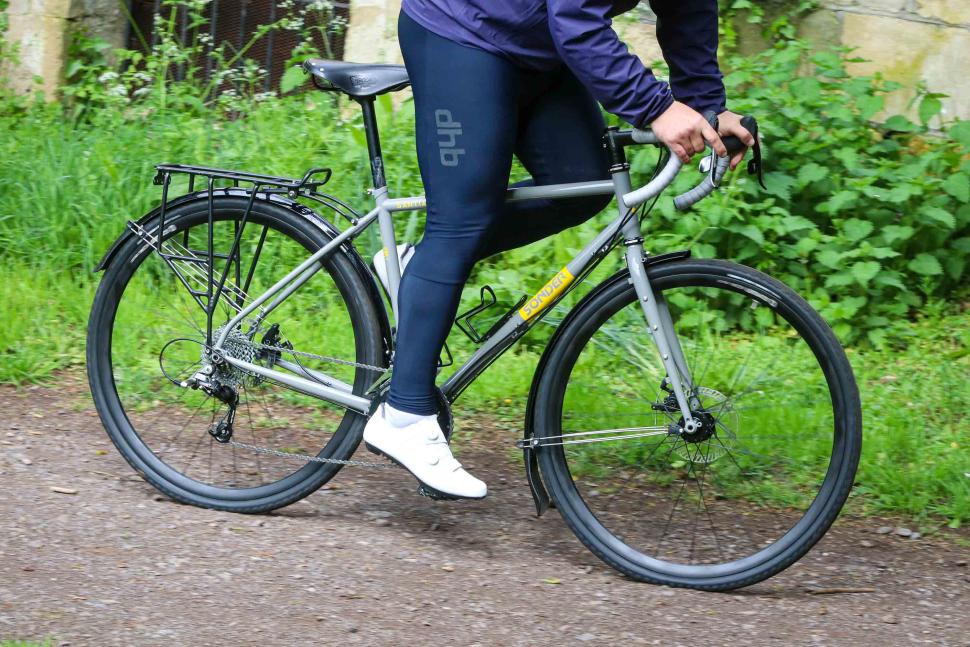 2024 Sonder Santiago Rival 22 Grand Tourer - riding 1.jpg
2024 Sonder Santiago Rival 22 Grand Tourer - riding 1.jpg£1,849.00
VERDICT:
High-quality, comfortable tourer with a lively ride and well-chosen components, though I'd have liked a lower bottom gear
Classy steel frameset
Lovely, comfy ride
Lively handling
Good wheel and tyre combo
Comes with rack and guards
Flared bar
Overgeared
Unyielding Brooks saddle
Only four sizes
Weight:
12,660g
Contact:
At road.cc every product is thoroughly tested for as long as it takes to get a proper insight into how well it works. Our reviewers are experienced cyclists that we trust to be objective. While we strive to ensure that opinions expressed are backed up by facts, reviews are by their nature an informed opinion, not a definitive verdict. We don't intentionally try to break anything (except locks) but we do try to look for weak points in any design. The overall score is not just an average of the other scores: it reflects both a product's function and value – with value determined by how a product compares with items of similar spec, quality, and price.
What the road.cc scores meanGood scores are more common than bad, because fortunately good products are more common than bad.
- Exceptional
- Excellent
- Very Good
- Good
- Quite good
- Average
- Not so good
- Poor
- Bad
- Appalling
The Sonder Santiago Grand Tourer is the British company's big-mile-eating machine. It's based around a neatly finished Reynolds 631 steel frame and both the fame and the steel fork are fully festooned with all the fixtures and fittings you need. Our model comes with mudguards, a rear rack and a Brooks leather saddle. But old-school steel is paired with mechanical disc brakes and its geometry is modern too, so the handling is quite lively. It's practical, comfortable and well equipped, though I'd have liked a lower bottom gear.
You'll find more options in our guide to the best touring bikes.
> Buy now: Sonder Santiago Grand Tourer for £1,849 from Alpkit
Sonder Santiago Grand Tourer: Ride
Steel frame, wide – or wide-ish – tyres and good contact points and what do you expect? Comfort. And that's exactly what you get. (I should say I did most of my testing using a Fabric saddle rather than the Brooks leather saddle specced, but more on that later.)
> Steel appeal: find out why bike makers and riders still love steel bikes
Compared with a traditional steel tourer, the Sonder Santiago has a shorter wheelbase, a slightly steeper head angle and a shorter head tube. For example, both the Surly Disc Trucker and Ridgeback Voyage have longer wheelbases, more relaxed head angles and taller head tubes – much taller in the case of the Surly. This helps to make the Sonder's handling decently lively too, and the Santiago isn't that heavy for a tourer, some of which reach 15kg or so.
This meant it was an absolute treat travelling with just a single lightly filled pannier on both my former commutes – the 16 miles from Bath to Bristol mainly on the Bristol Bath bike path, and the 12 miles from Trowbridge to Bath largely on the canal towpath.
The handlebar also contributed to very good handling over different surfaces, measuring 40cm from centre to centre at the hoods, but flaring out to 46cm at the drops. This lets you ride on the hoods on the road in a comfortably and reasonably narrow position – go aero! – while the extra width comes into its own when you venture off road, when it offers you greater control.
While I liked the Grepp handlebar tape, I'd probably go for something plusher still for touring, where I prefer as much padding as possible.
It's a pretty decent climber, too. Unloaded you can get out of the saddle, with the compact frame stiff enough to cope with the extra torque. Load it up and you'll be spinning in the 32x32 bottom gear, though there were times I'd have liked an even lower gear (a theme that I'll return to!).
It descends confidently, the just-over-a-metre wheelbase making it pretty lively, though as it only has cable-actuated disc brakes, your hands and wrists will be working quite hard to stop you safely.
I haven't used the Goodyear County tubeless-ready tyres before, but like Jez who tested the Ultimate version, I was impressed.
They grip well on road, thanks to their slick central strip, and they have squared-off shoulder blocks for gravel and off-road use. You won't want to take them on full-on mountain bike routes, but for gravel trails, fine gravel surfaces, singletrack and broken roads they're just the job.
Their 35mm width is a good compromise between comfort, protection and weight – and they come with a layer of puncture protection too, which is absolutely crucial when you're touring.
Also, not only are they tubeless-ready, but Sonder will set them up as tubeless for you for £44.99. Although even with inner tubes fitted, their 120tpi construction means they're reasonably supple.
Overall I found the Sonder spot on for day-long rides over smooth roads, poor roads, towpaths and unsurfaced tracks, delivering very good comfort and control.
Sonder Santiago Grand Tourer: Frame and fork
It's a mixture of the classic and the modern when it comes to the Sonder Santiago – the old school comes in the form of a steel frame and fork. But it's all TIG-welded in the Far East rather than lugged and brazed in a British workshop.
The frame isn't made from Reynolds 531 either, but from one of its more modern offspring – Reynolds 631, an air-hardened steel 'made for Reynolds in Germany from 100% recycled raw input scrap'. And being steel, it can be recycled again – though hopefully not in my lifetime...
Other modern features a long way from my first tourer in the 1980s include the fact that both the frame and fork are built for thru-axles to make the most of the bike's disc brakes.
You get a full range of fixtures and fittings, with top tube bento box bosses about the only absentee. The main frame gets three pairs of bottle cage bosses, with one pair under the down tube, while the influence of bikepacking shows in the boss-emblazoned fork.
The frame has fittings for a rear rack and both the frame and fork have mudguard mounts, with our Grand Tourer version of the Santiago coming with a rack and guards out of the box. You can also get a naked version of the Santiago, the Touring, for £1,649 and spec it with your own guards and rack.
It's a pretty compact frame and the geometry is a bit tighter and more aggressive than you might expect from a tourer, but there is room for plenty of rubber at each end, which you're going to need if you're taking this far and wide.
Sonder says there is clearance for 47mm tyres if you're running 650B wheels or 37mm with 700C, but our test bike has 35mm tyres and full-size mudguards and I reckon you could go a little wider than 37mm.
It's not unusual for a tourer of this size to have a wheelbase 106cm long or so – not the Santiago. Our frame nudges itself over a metre but only by a fraction to 1,006mm, which makes it more like a light tourer or audax bike than an expedition machine. The 72-degree head tube angle may be a degree slacker than you'll find on a road bike, but it's pretty aggressive for a tourer.
Sonder Santiago Grand Tourer: Finishing kit
Rather than the more familiar Shimano, Sonder has gone with SRAM Rival for this version of its Santiago, though it is available in 1x and 2x setups with either SRAM or Shimano groupsets.
If you're not familiar with SRAM's shifting system, it looks similar to Shimano's at first glance but is different in quite a few ways – the outer lever doesn't double up as a gear lever but is just a brake lever. Instead, you tap the inner paddle for upshifts to a smaller sprocket, or push it to move the chain to a lower gear. It's not quite as intuitive as Shimano SIS, but it works well with crisp and accurate shifting, and you do get used to it pretty quickly.
My main issue is that I feel it's slightly overgeared at the bottom end. Even in 2024 you can find triple chainsets on touring bikes, such as the Surly Disc Trucker I tested in 2021. This year's model comes with a triple, as do the Tour and Expedition from Ridgeback.
The reason for a triple chainset on a tourer is to give you a super-wide range of gears so you can always ride at the right cadence – that and having a very low bottom gear. If you're carrying two or more panniers and you reach the foot of a climb stretching as far as the eye can see, there's pretty much no bottom gear that would be too small for me.
It's not unusual for a bottom gear to be a teeny-tiny wall-crawling 20in or so – such as the Disc Trucker's 26x34 pairing. The Sonder gets nowhere near that, thanks to the 1:1 ratio bottom gear offered by the 48/32 chainset and 11-32 cassette.
For most of us – even me! – most of the time that will be low enough, but for an extended, loaded tour somewhere that isn't as flat as Kansas (a state officially flatter than a pancake!) you'll want to go lower still.
The easiest way to get down to 20in or so would be to go for a smaller chainset, such as the 11-speed-compatible Spa Cycles TD-2 Super Compact that goes as low as 42/26 and even 40/24. You can also read our feature on how to get ultra low gearing...
Sonder Santiago Grand Tourer: Braking
One of my former colleagues argued years ago that mechanical disc brakes are the worst of all worlds – nowhere near as good as hydraulic discs and with so few advantages over rim brakes that they're not worth the effort.
But if there is one place that cable-actuated discs are actually a very sound choice, I think it's the touring bike.
Why? Well, I've cycled through Laos, Cambodia, Thailand and some parts of Australia that aren't that close to a bike shop. And if I had to fix or fettle some brakes in the back of beyond, I'd be more confident that my technical skills and sausage fingers could cope better with mechanical matters than hydraulics.
And there's another very practical reason to choose disc brakes over rim brakes if you're out in the wilds. Years ago, while we were touring in Australia, one of the tyres on my wife's bike developed a huge (and I mean HUGE) split that even a boot wouldn't have coped with, with the nearest bike shop half a day's ride away. And I had to improvise with gaffer tape around the tyre AND rim. As a temporary measure it worked – but it did mean she was down to one brake.
With rim brakes that wouldn't have mattered so much. But if you bash your rim out of true – easily doable on Australia's corrugated tracks – you can still carry on riding with disc brakes. The ability to ride with a dinked or buckled rim is one of the great advantages of disc brakes that is all-too-often overlooked.
The brakes themselves are decent. They're not as powerful as hydraulics and they require more effort on your part, but they're controlled and consistent in all weather, which I was well able to try out during testing during the early part of the year.
Are you sitting comfortably?
I'm not a fan of Brooks' leather saddles. There, I've said it. I know that generations of British cycle-tourists swear by them, I just swear at them. I have tried them. Honest.
I attempted to ride one in for 1,750 miles and it was as unyielding after that distance as it was at the start. That said, I do like the non-leather Brooks Cambium – which is also better for the cows of the world.
If I were to buy the Sonder Santiago specced with SRAM Rival I'd go for the Touring version with an own-brand saddle, which is £200 cheaper – and the Brooks saddle accounts for a lot of that difference.
The seatpost and stem are both Sonder and standard alloy fare – nothing wrong with that – and the package is finished off with a Sonder Mool rear rack, with an 18kg capacity. That would be enough for me, but you might want more.
The wheels are handmade at Sonder's own facility in Nottingham – they performed well and look like they'd go on rolling well for years – and I've already talked about the Goodyear County tyres.
Sonder Santiago Grand Tourer: Value
I think the Santiago Grand Tourer represents pretty good value for the quality of bike that Sonder has delivered.
The Surly Disc Trucker has a chromoly frame and arguably lower spec components and costs £2,400, though it has a great ride and a suitably low bottom gear.
Spa Cycles has a large range of tourers that probably edge the Sonder for value, with its Reynolds 725 Steel Tourer with 3x Sora starting at £1,250, for instance, though that has rim brakes. But even its 725 Disc Tourer is a fair bit cheaper than the Sonder, costing £1,525, and that has the option of a wall-crawling 24x34 bottom gear.
Dave liked the Thorn Club Tour MkV when he reviewed it in 2020, when it cost £1,870.86, though it now starts at £2,100. But it's available in 10 sizes, compared with just four for the Sonder, and in all sorts of configurations and with flat or drop bars.
Sonder Santiago Grand Tourer: Conclusion
I really enjoyed riding the Sonder Santiago – and would happily have held on to it for long-distance commuting (not that I commute any more...), touring and pretty much any type of riding, and over all sorts of surfaces. It's comfortable, well equipped, comes with mudguards and a rear rack and a full range of fixtures and fittings. I'm not a fan of the Brooks leather saddle, and I'd have liked a lower bottom gear, but it's still a classy tourer and one I'd very happily recommend.
> Buy now: Sonder Santiago Grand Tourer for £1,849 from Alpkit
Verdict
High-quality, comfortable tourer with a lively ride and well-chosen components, though I'd have liked a lower bottom gear
road.cc test report
Make and model: Sonder Santiago Rival 22 Grand Tourer
Size tested: Medium, 554mm
About the bike
List the components used to build up the bike.
Santiago Reynolds 631 steel frame with thru-axle, rack and mudguard mounts
Santiago Steel straight fork with thru-axle, mudguard mounts and three bosses
Sonder Nova 700c rims
Goodyear County tubeless-ready tyres
FSA Vero Pro 48/32 chainset, FSA MegaEvo bottom bracket, SRAM PC1170 chain, SRAM PG11-30 11-32 cassette. SRAM Rival 22 shifters and front and rear derailleurs
Braking: Tektro MD-C500 cable discs, 160mm rotors
Grepp bar tape, Sonder Spitfire bar 40cm (c-c), 100mm Sonder Storc stem, FSA Orbit MX headset 1 1/8in. Brooks B17 Standard saddle, 27.2mm Sonder seatpost 400mm.
Extras: Front and rear SKS 45mm mudguards, Sonder Mool 18kg capacity rear rack, two bottle cages
Tell us what the bike is for and who it's aimed at. What do the manufacturers say about it? How does that compare to your own feelings about the bike?
Sonder says: "Our Rival 22 Grand Tourer build is specifically designed for high-mileage cycle touring straight out of the box. Specced with everything you need to for a two-wheeled world tour including: Brooks saddle, bottle cages, mudguards and a pannier rack.
"Built around a Reynolds 631 steel frame, Santiago is the definition of dependable. Capable of being battered, fitted with mudguards as a winter workhorse, ridden all day in comfort loaded with racks and panniers and pedalled around the world.
"Our take on the classic steel road tourer: smooth, reliable and assured. Built around a Reynolds 631 steel frame, Santiago is the definition of dependable. Capable of being battered, fitted with mudguards as a winter workhorse, ridden all day in comfort as an audax slayer or loaded with racks and panniers and pedalled around the world. Whatever your endeavour, Santiago has your back."
Yep, I think Sonder has pretty much hit the nail on the head with its Santiago. As it stands, it would make an ideal long-distance commuter bike for riding over mixed surfaces, and it's comfortable enough for weekends - or longer - away, and it would make a spot-on audax bike too.
The change I'd make? For full-on extended touring I'd want a lower bottom gear than our model's 32x32 pairing.
Where does this model sit in the range? Tell us briefly about the cheaper options and the more expensive options
The Santiago is the only specific tourer in the Sonder range, though you could easily tour on Sonder's Camino gravel bike that starts at £1,149 for an aluminium model rising to £3,349 for a titanium model with Campagnolo Ekar. Sonder's titanium Sedona gravel model starts at £2,849 for GRX1 and rises to £3,699 for Force 1 AXS.
The Santiago itself comes in 10 different models from £1,249 for a flat-bar bike with Apex 1, and this is one of two top-priced models that both cost £1,849 - a Shimano 105-equipped model and our Grand Tourer with 11-speed SRAM Rival, mudguards, a rear rack and a Brooks B17 leather saddle.
The Sonder Santiago Touring has the same Rival groupset but no mudguards or rack, and it has a Sonder Abode saddle rather than the Brooks, which I'd prefer – and it costs £200 less.
Frame and fork
Overall rating for frame and fork
8/10
Tell us about the build quality and finish of the frame and fork?
Both the frame and fork are very neatly finished.
Tell us about the materials used in the frame and fork?
The frame is made from Reynolds 631, an air-hardened steel descended from the venerable 531 that featured in my first proper bike in the 1980s. I like the fact that 631 is made from 100% recycled scrap metal, and is of course 100% recyclable itself. Take that, carbon fibre bike!
The fork is Sonder's own steel fork and, like the frame, comes with a panoply of fixtures and fittings.
Tell us about the geometry of the frame and fork?
A steel tourer it might be, but the geometry is really quite modern - the wheelbase is barely more than a metre, the head angle a pretty steep 72°.
How was the bike in terms of height and reach? How did it compare to other bikes of the same stated size?
Looking at the geometry, the Sonder Santiago's reach figure is pretty typical but the shorter head tube contributes to a lower stack figure, which reflects in handling that is surprisingly lively for a tourer.
Riding the bike
Was the bike comfortable to ride? Tell us how you felt about the ride quality.
Very comfortable - a steel frame with 35mm tyres looks like it's going to be a comfortable pairing, and indeed it is. It's ideal for day-long rides and weeks or months away.
Did the bike feel stiff in the right places? Did any part of the bike feel too stiff or too flexible?
I had no issues with the bike's stiffness. The steel frame is compact and that helps to keep it stiff.
How did the bike transfer power? Did it feel efficient?
All good - no feeling of any inefficiency.
Was there any toe-clip overlap with the front wheel? If so was it a problem?
There was no overlap for me, even with a front mudguard, though it might be possible if you've bigger feet than my quite modestly proportioned size 42s.
How would you describe the steering? Was it lively neutral or unresponsive? Surprisingly lively for a tourer, which is down to the geometry and a weight that is quite modest for a tourer.
Tell us some more about the handling. How did the bike feel overall? Did it do particular things well or badly?
It pretty much did everything you'd want from a tourer, notably it was comfortable, but the shortish head tube and steeper head angle than is usual in a touring bike made it a little livelier than you'd expect, so it would also make a great audax bike or long-distance commuter.
Which components had the most effect (good or bad) on the bike's comfort? would you recommend any changes?
All good for me with one exception. I liked the bar tape, I like the flared - but not excessively so – handlebar and 35mm tyres are very good for comfort over all sorts of riding surfaces. Which brings me to the saddle.
I don't like Brooks' leather saddles. Many do, but I don't. If I was buying a Santiago I'd go for the Touring rather than the Grand Tourer model and use the £200 saved to choose my own guards and rack – and stick with the standard Santiago saddle.
Rate the bike for efficiency of power transfer:
7/10
Rate the bike for acceleration:
7/10
Rate the bike for sprinting:
6/10
Rate the bike for high speed stability:
8/10
Rate the bike for cruising speed stability:
9/10
Rate the bike for low speed stability:
7/10
Rate the bike for flat cornering:
7/10
Rate the bike for cornering on descents:
7/10
Rate the bike for climbing:
7/10
The drivetrain
Rate the drivetrain for performance:
8/10
All worked very well, though I'd have preferred a lower bottom gear.
Rate the drivetrain for durability:
8/10
Tell us some more about the drivetrain. Anything you particularly did or didn't like? Any components which didn't work well together?
The drivetrain worked well with no shifting issues at the front or back. My only concern is that if I was loading up to go on tour I'd like a lower bottom gear - but that's it.
Wheels and tyres
Rate the wheels for performance:
8/10
Rate the wheels for durability:
8/10
The Sonder Nova wheels are handbuilt at Sonder's own facility in Nottingham and they look built to a high standard too, so I'd have no questions over their durability.
Tell us some more about the wheels.Did they work well in the conditions you encountered? Would you change the wheels? If so what for?
The wheels performed excellently during testing over a wide variety of riding surfaces.
Rate the tyres for performance:
8/10
It's my first experience of using these Goodyear tyres, and I was impressed. The smooth central strip was efficient on tarmac with the shoulder blocks providing grip off-road – they were great on gravel tracks and towpaths.
Rate the tyres for durability:
8/10
Rate the tyres for comfort:
8/10
Their 35mm width and 120tpi construction combine to deliver very good comfort.
Tell us some more about the tyres. Did they work well in the conditions you encountered? Would you change the tyres? If so what for?
All good - I'd happily keep these tyres for both commuting and touring. And the fact that they are tubeless ready - and that Sonder can set them up as tubeless for you – is a bonus too.
Controls
Rate the controls for performance:
8/10
SRAM's shifting may take a little getting used to if it's not familiar but the Rival levers worked well.
Rate the controls for durability:
8/10
I'm still using a bike with the first generation of SRAM's Force groupset and I've had no issues in 14 years, which bodes well.
Rate the controls for comfort:
8/10
Anything else you want to say about the componentry? Comment on any other components (good or bad)
I've only two real criticisms of the bike's components: I'd like a lower bottom gear for expeditioning/heavy touring, and personally I'm not a fan of Brooks' leather saddles. But that might put me in a minority, and I know many people - including friends of mine - love them and would ride nothing else. But they're wrong, of course!
Your summary
Did you enjoy riding the bike? Yes
Would you consider buying the bike? Yes
Would you recommend the bike to a friend? Yes
How does the price compare to that of similar bikes in the market, including ones recently tested on road.cc?
The price is pretty reasonable for a bike of this quality – it's much less expensive than the Surly Disc Trucker and less expensive than the Thorn mentioned in the review. Though the Spa Cycles range of tourers – also with steel frames and handbuilt-in-the-UK wheels – do come in a little cheaper than the Sonder.
Rate the bike overall for performance:
8/10
Rate the bike overall for value:
6/10
Use this box to explain your overall score
I think the Sonder Santiago is a very good bike, one that I'd happily buy and own. It's comfortable, the handling is good and it comes with mudguards and rear rack straight out of the box, which makes it a very good choice as a long-distance commuter as well as a tourer.
About the tester
Age: 57
I usually ride: 2018 Giant TCR Advanced 2 with Halo Carbaura disc wheels My best bike is:
I've been riding for: Over 20 years I ride: Every day I would class myself as: Expert
I regularly do the following types of riding: time trialling, commuting, touring, sportives, general fitness riding,
Simon has been riding since he was a nipper and more seriously since his university days way back when. He has been a cycling journalist for more than two decades and reckons he has upwards of 200,000 miles in his legs. In his time he has competed (in the loosest sense of the word) in time trials, triathlons, duathlons and a lone cyclo-cross; he has been a long-distance commuter for decades – on road and canal towpath. He has also toured extensively in Laos, Cambodia, Thailand, Malaysia and has ridden 4,000km from Cairns to Melbourne in Australia, and the 700km from Picton to Dunedin in New Zealand. If his legs carry on working, he'd like to ride from Perth to Sydney...
Latest Comments
- David9694 48 min 17 sec ago
Trentham Estate shopper 'stuck on car park for three hours' demands action...
- Disgusted of Tunbridge Wells 4 hours 29 min ago
"One cyclist said while trying to avoid this puddle he was nearly knocked off his bike."...
- mattw 7 hours 27 min ago
Lisa Townsend very much views her police role through a political lens....
- Bigtwin 8 hours 19 min ago
My LBS has a 105 Di2 Giant road bike in the window for £5k, all bar a quid. It's been there for months. QED.
- Bigtwin 8 hours 23 min ago
Museum thread, but hey. I had one of these, before I saw this review. And it's spot on. The review, not the bike. I put up with it for a couple...
- mattw 9 hours 7 sec ago
Signed and promoted in a couple of my networks.
- mattw 9 hours 9 min ago
Trying to work out why I need a £390 3d printed titanium bottle cage....
- wtjs 11 hours 27 min ago
Good point! Over 18 months later, and I haven't seen (could have missed it!) a long term review of this groupset
- unami 11 hours 41 min ago
https://www.autoexpress.co.uk/exclusive/365458/driver-whose-towbar-voide......
- Miller 14 hours 21 min ago
Pogi and a few of the others are on the divisive new Colnago aero bike in those Insta photos.

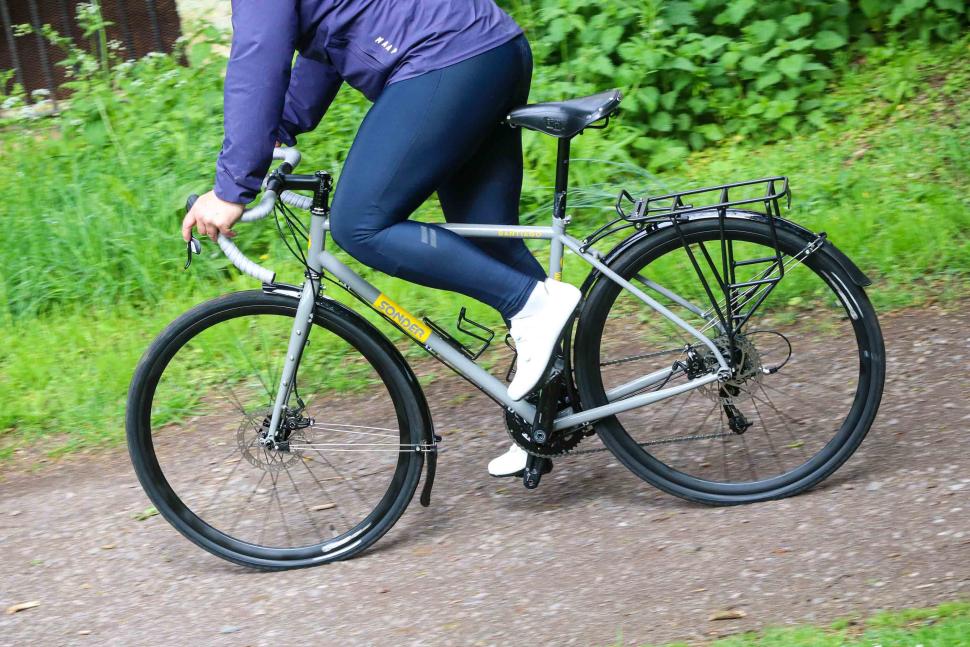

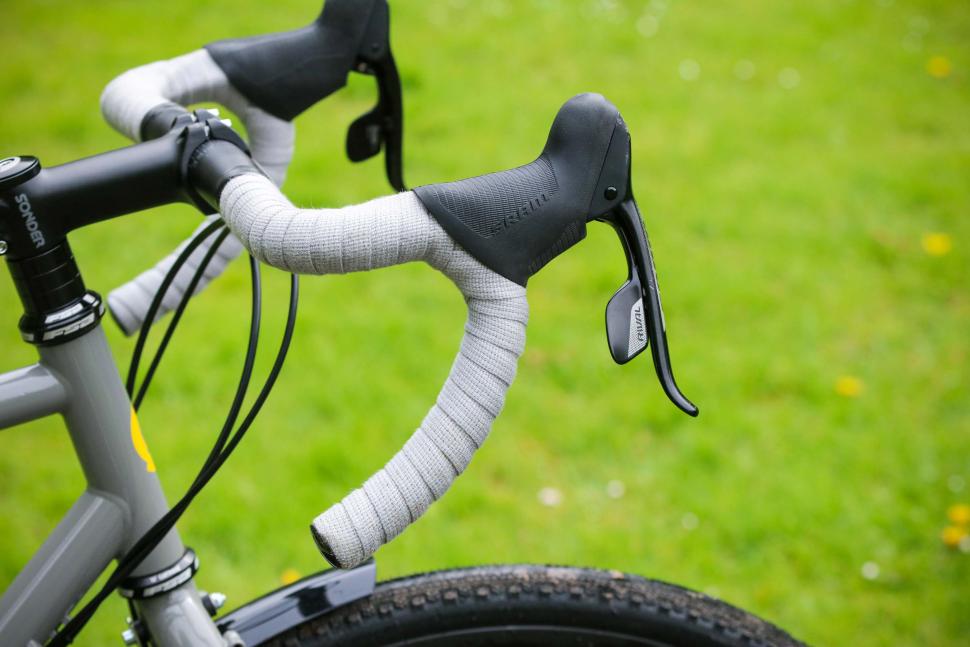











































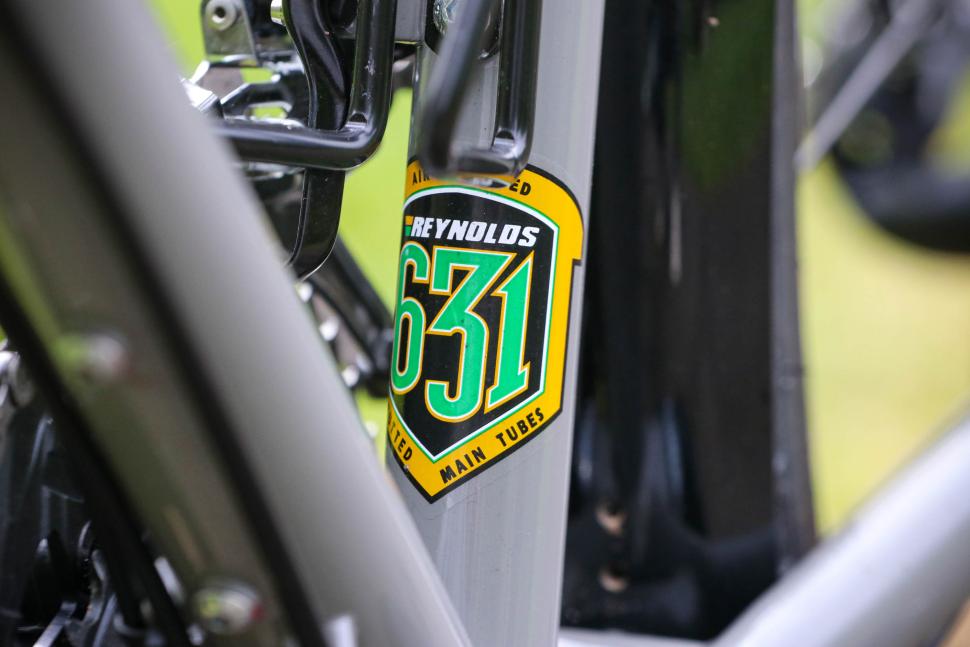
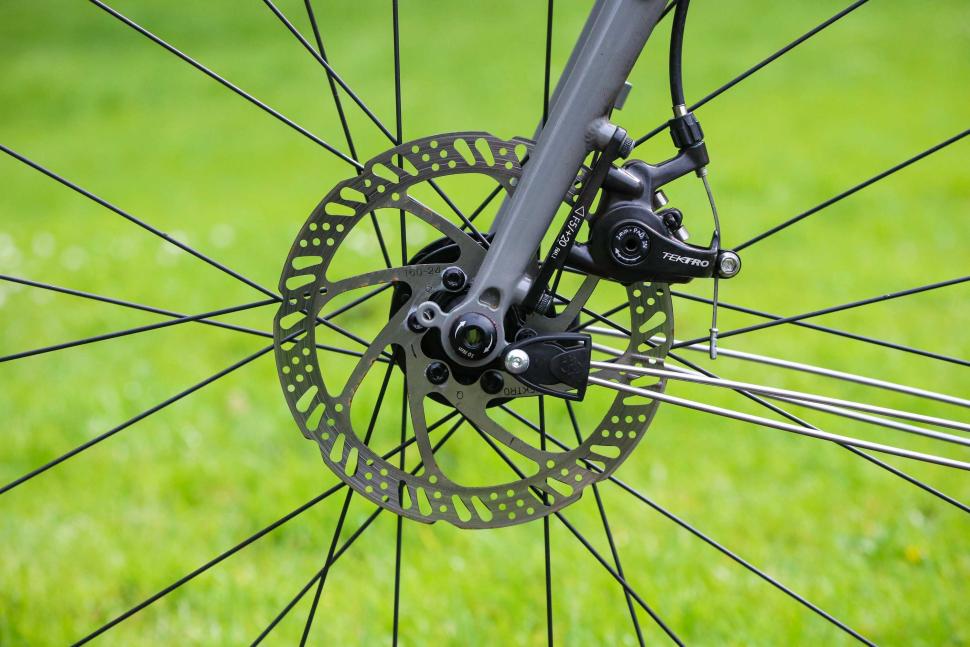
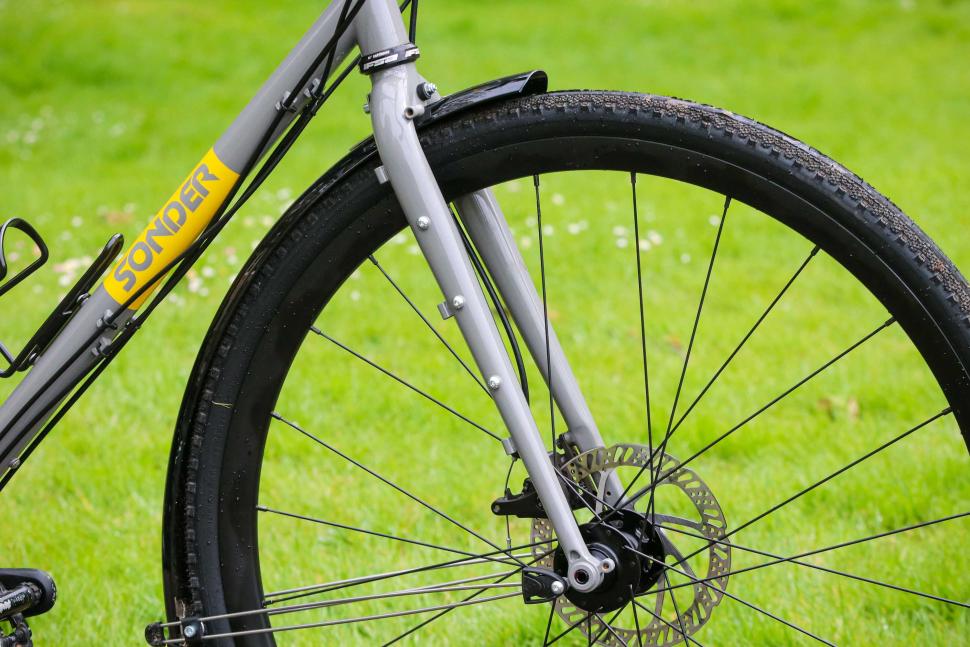

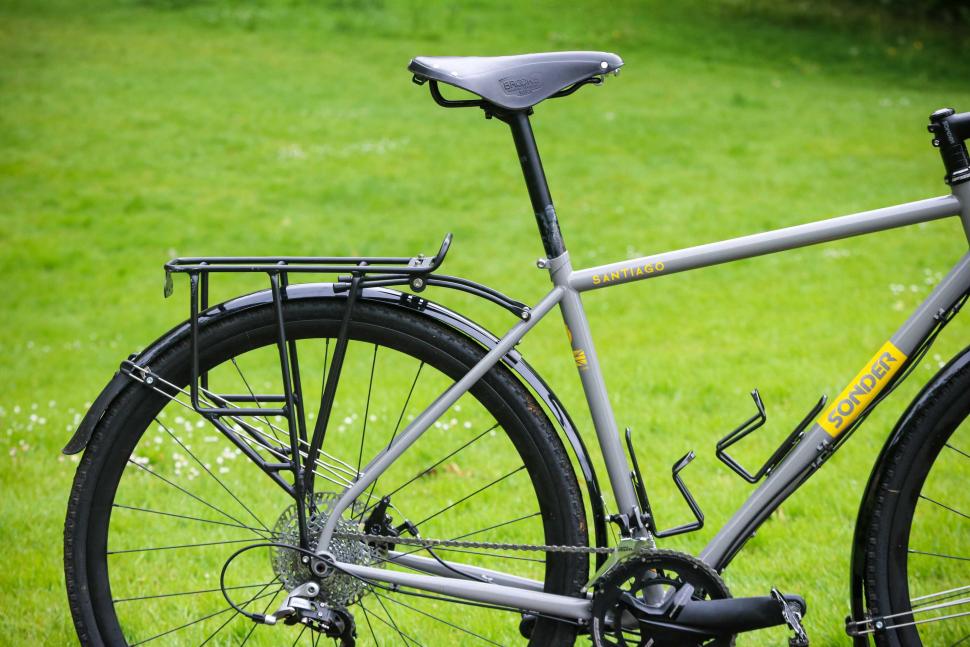




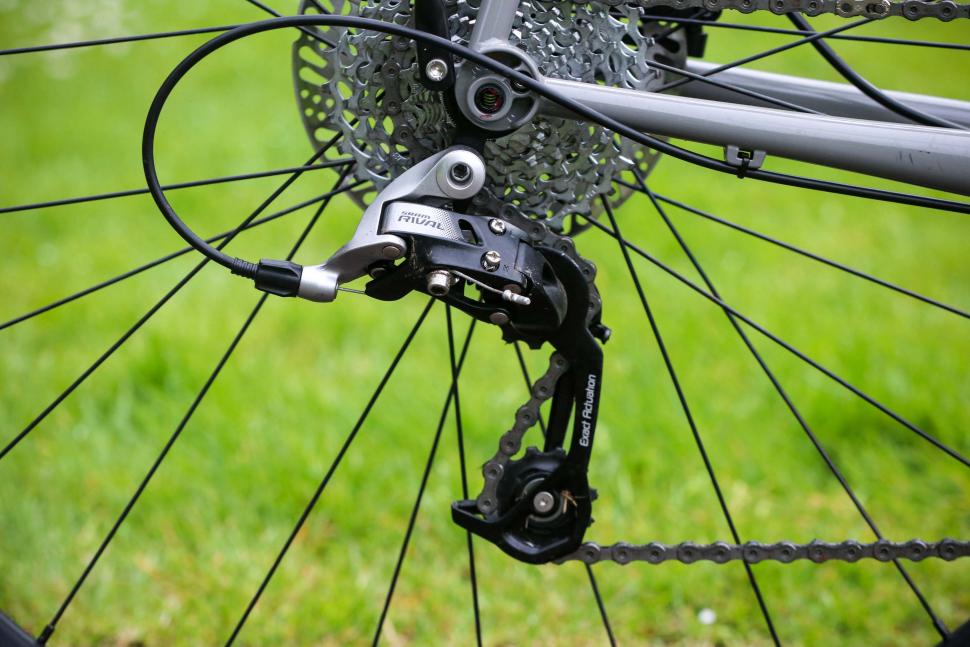



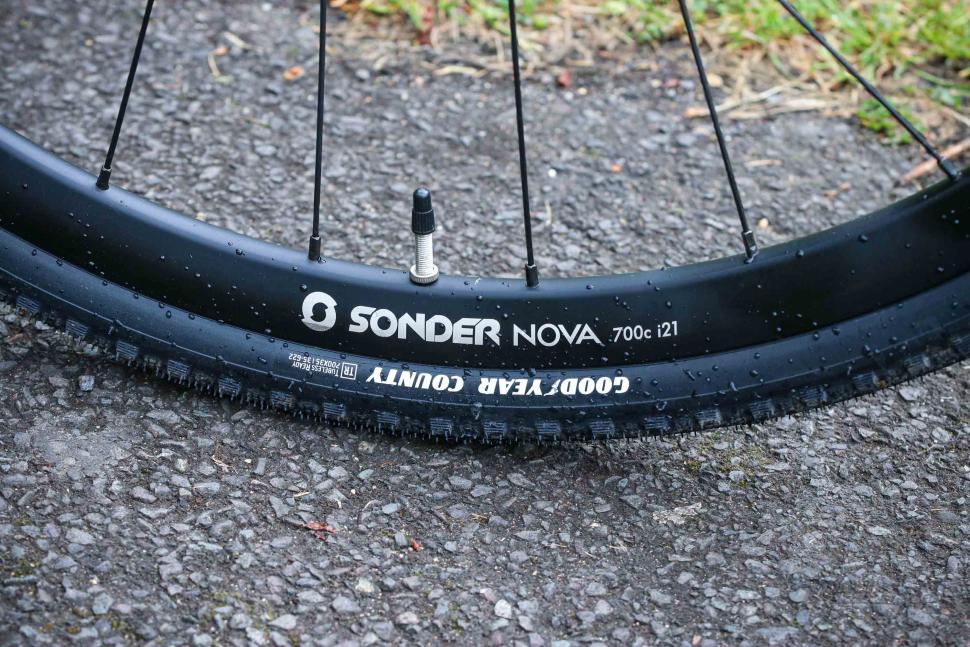
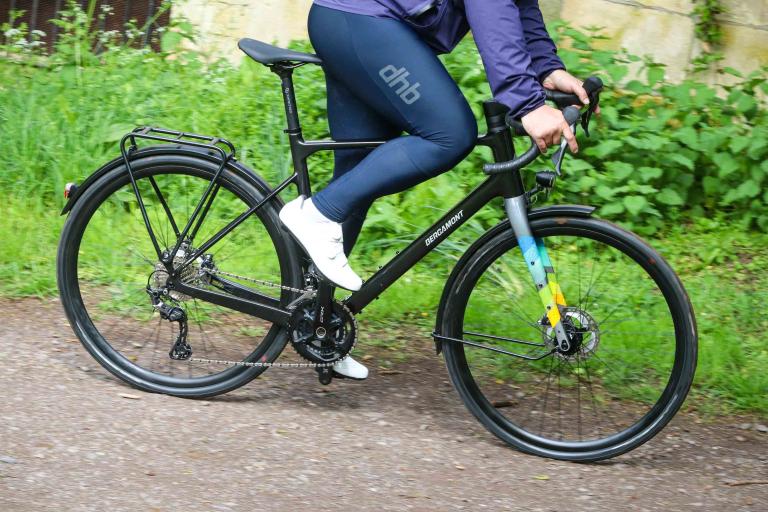
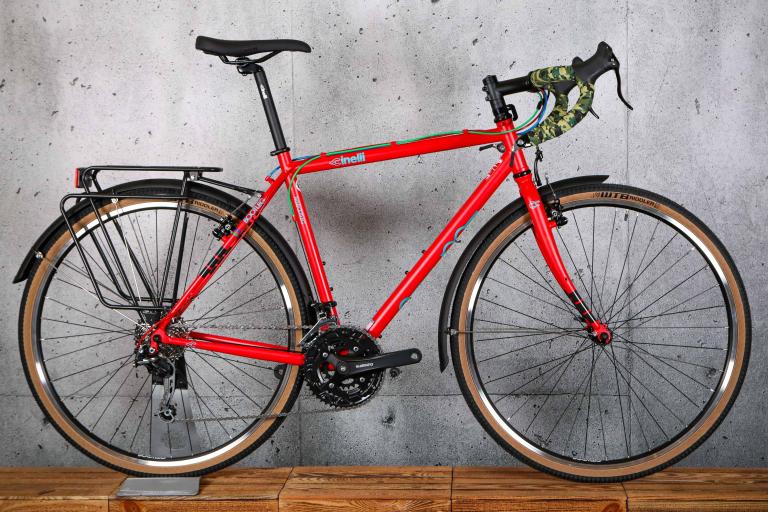
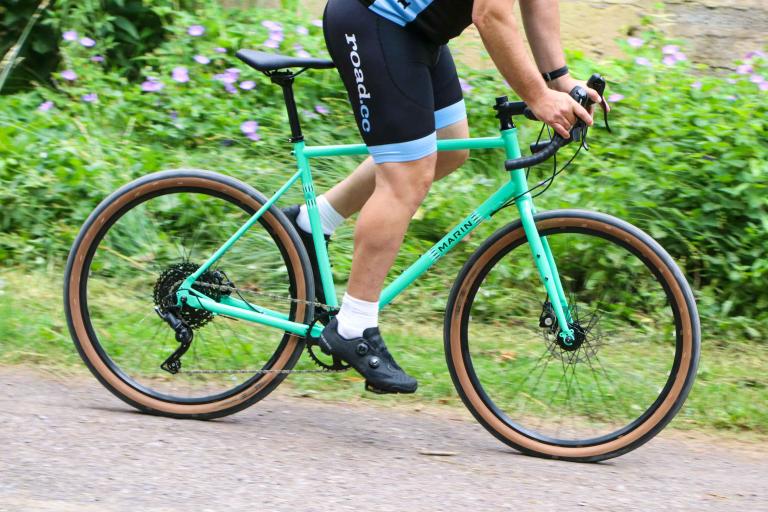
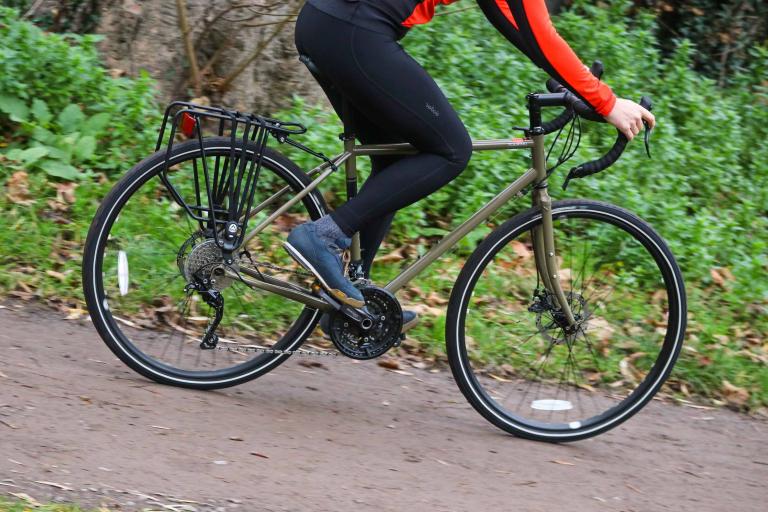
Add new comment
5 comments
Reminds me of a 90's Kona, and so on that note I don't like the bent seat stays, I'd have the seat tube keyway forward facing and debrand the graphics. It's nearly perfect, I'd nearly buy one.
Looks like it's crying out for a goat link + an 11-40 cassette!
Seems an odd spec and pricepoint when you can get 2x12 GRX 610 with full hydralics and 30*36 gear range for £50 cheaper.
https://alpkit.com/products/sonder-santiago-grx2
Now you may not want cutting edge on a tourer but still.... paying more for less isnt good.
There are cheaper including Tiagra but this seems the pick of the litter from a gearing perspective.
Generally Sonder seem to get better Shimano pricing than SRAM, the 105 2x12 bike is the same price as this model.
** The above prices are without the Cambium and mudguards so its not like-for-like. But I think I'd still chose a better model than this one.
The non-"Grand Tourer" version with Rival 22 is £1,649, so that would suggest Sonder are charging £200 for the extras (mudguards, bottle cages, rack and upgraded saddle).
The bike is very light indeed for an equiped touring bike. A taller headtube would indeed be welcome. Yes Brooks are horrible, but to be honest bikes should be equipped with a £10 saddle and let the rider choose.